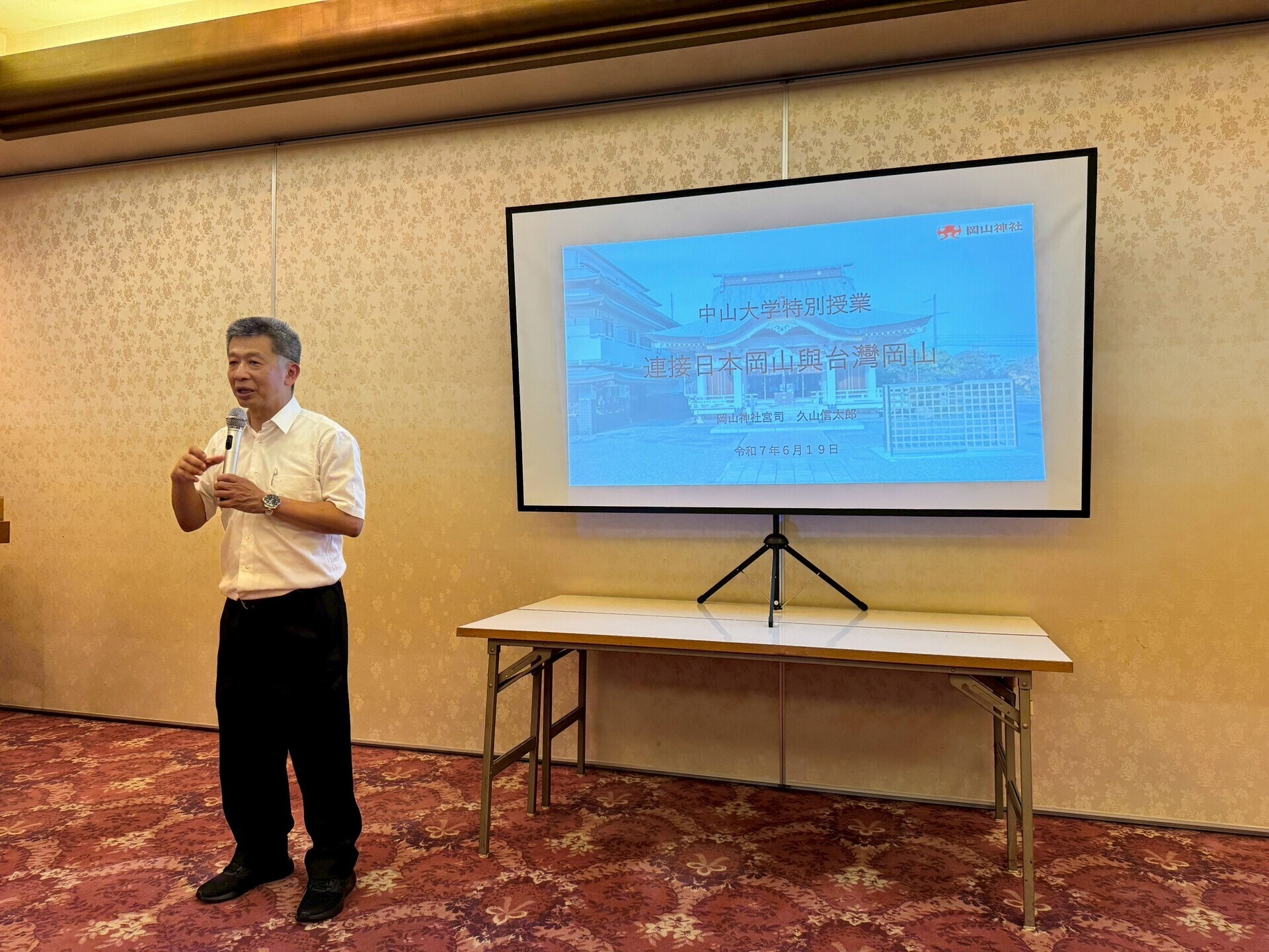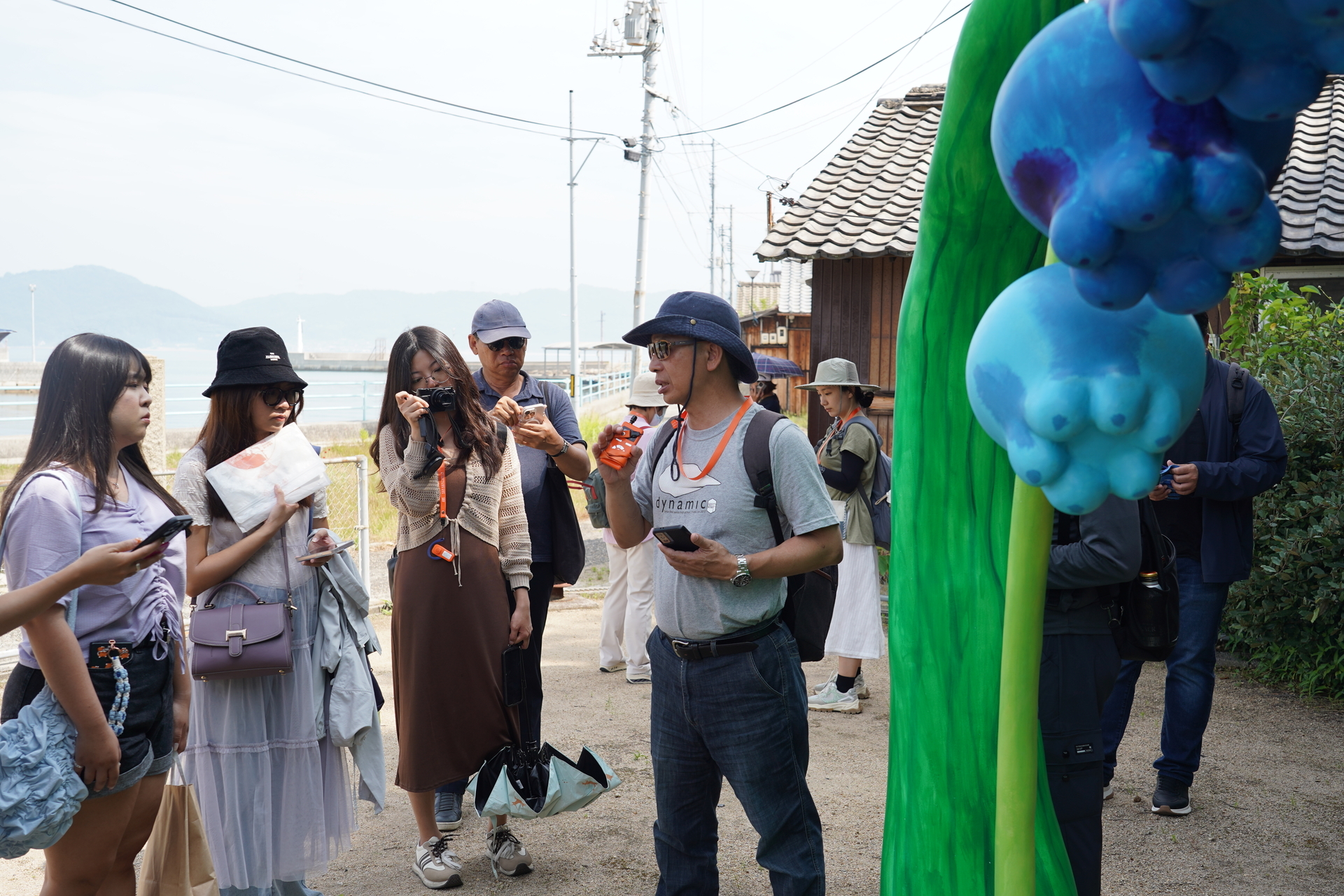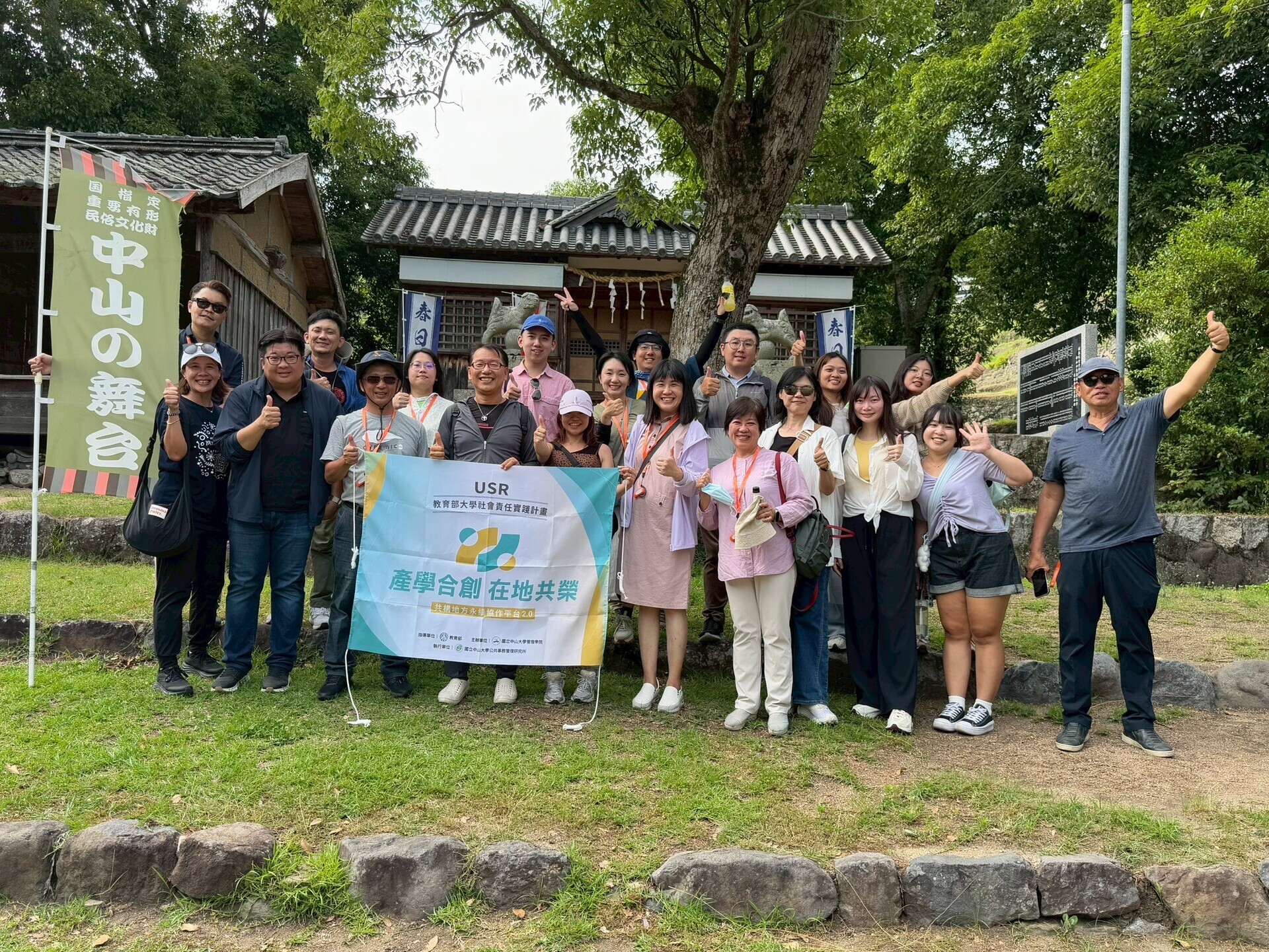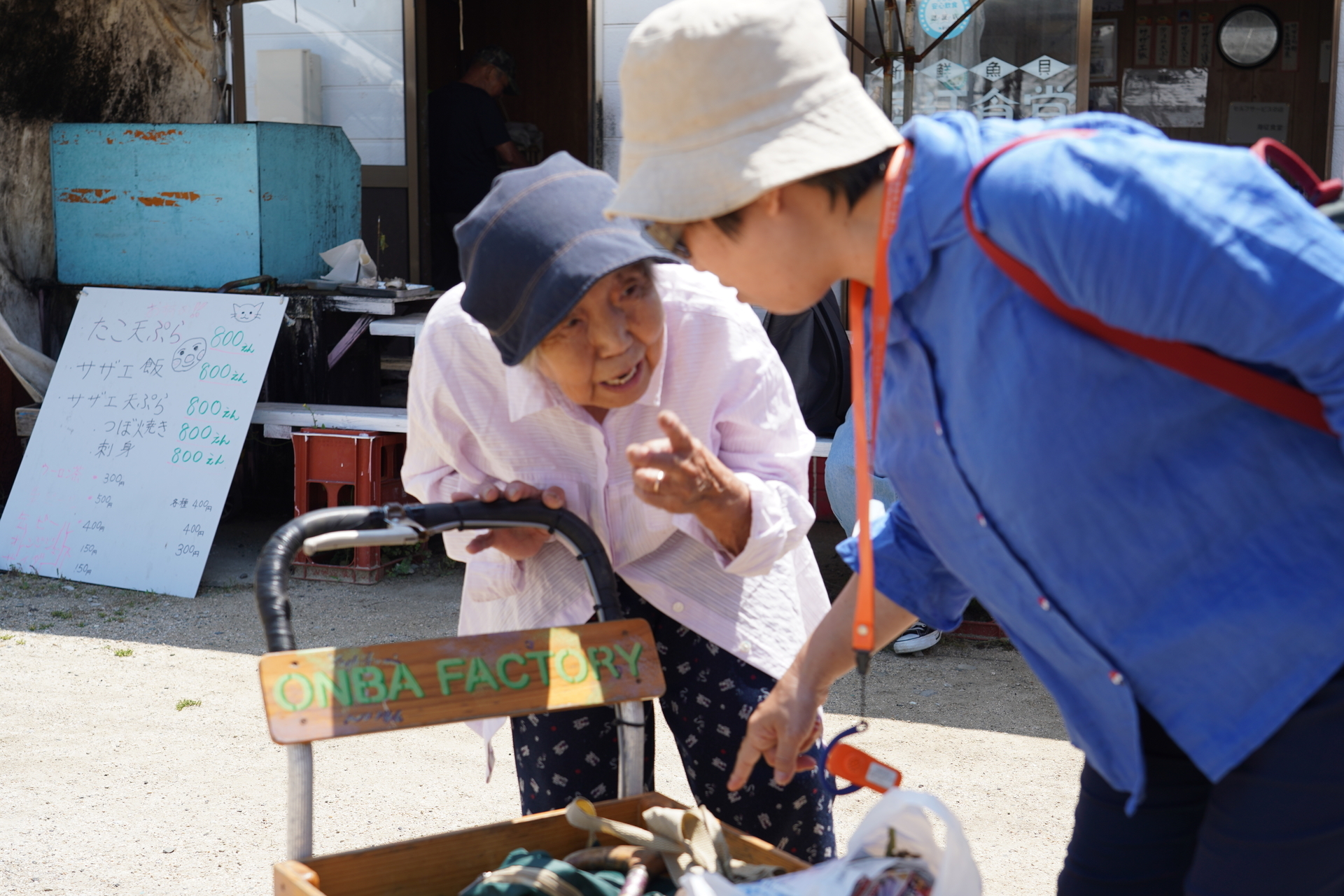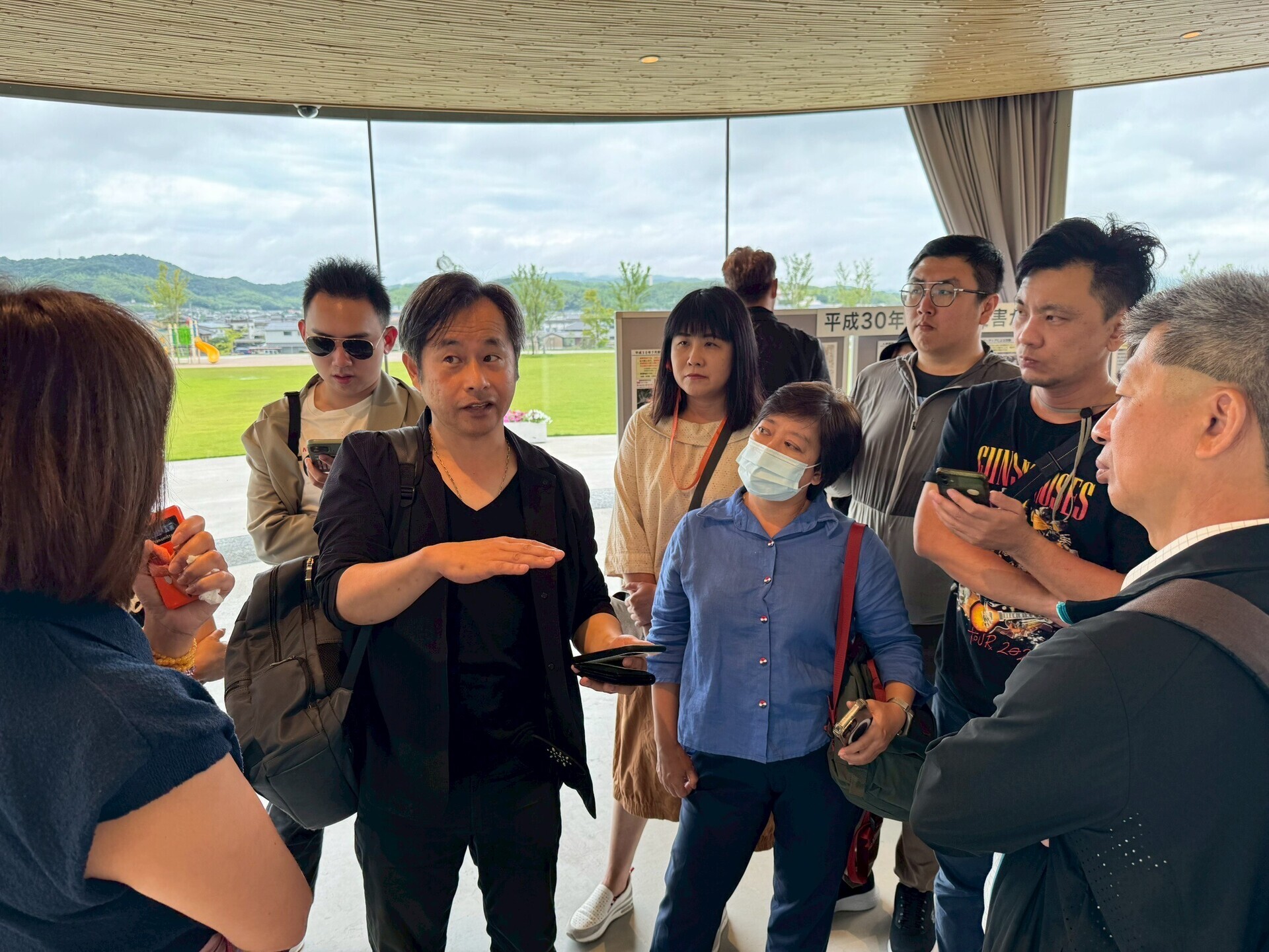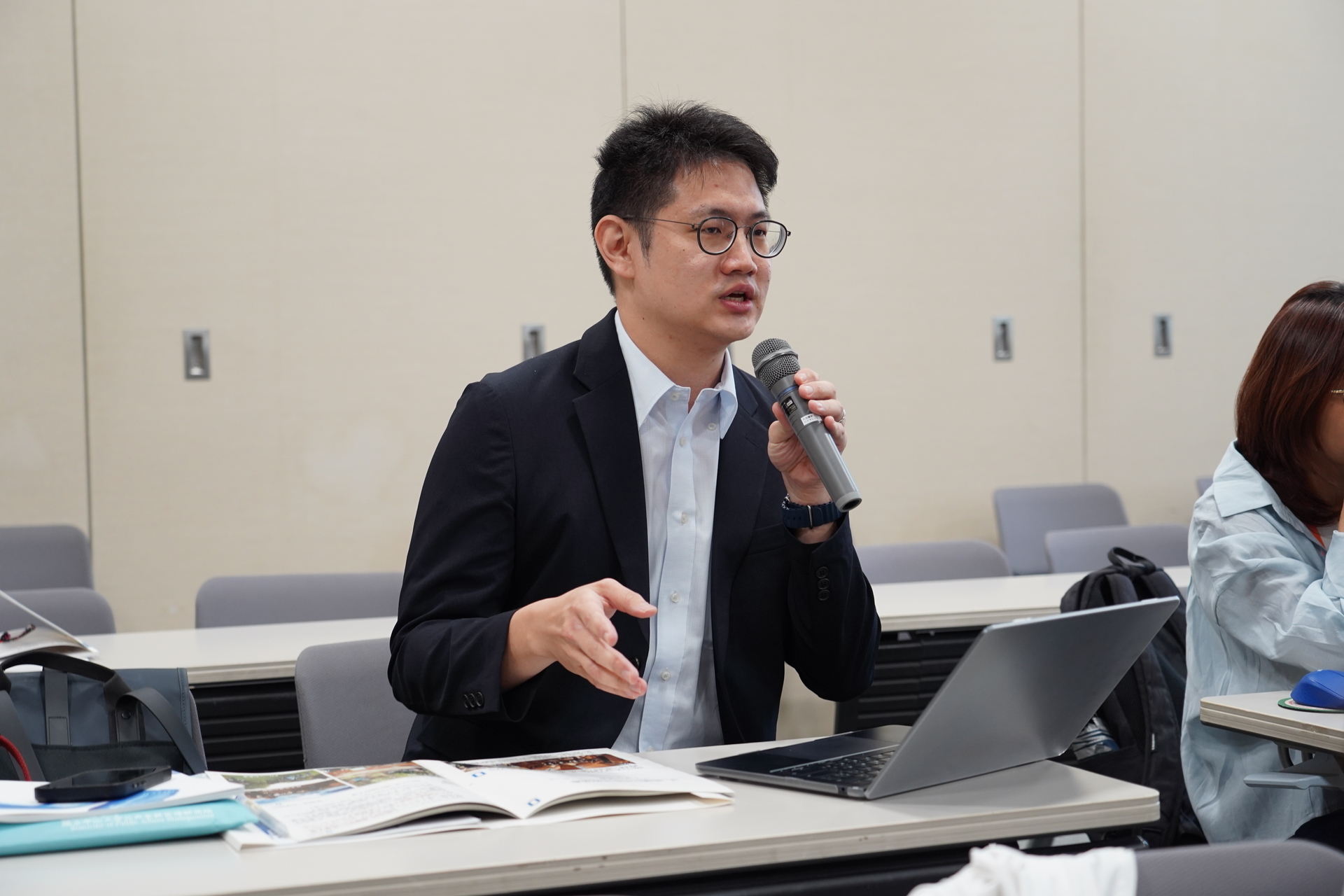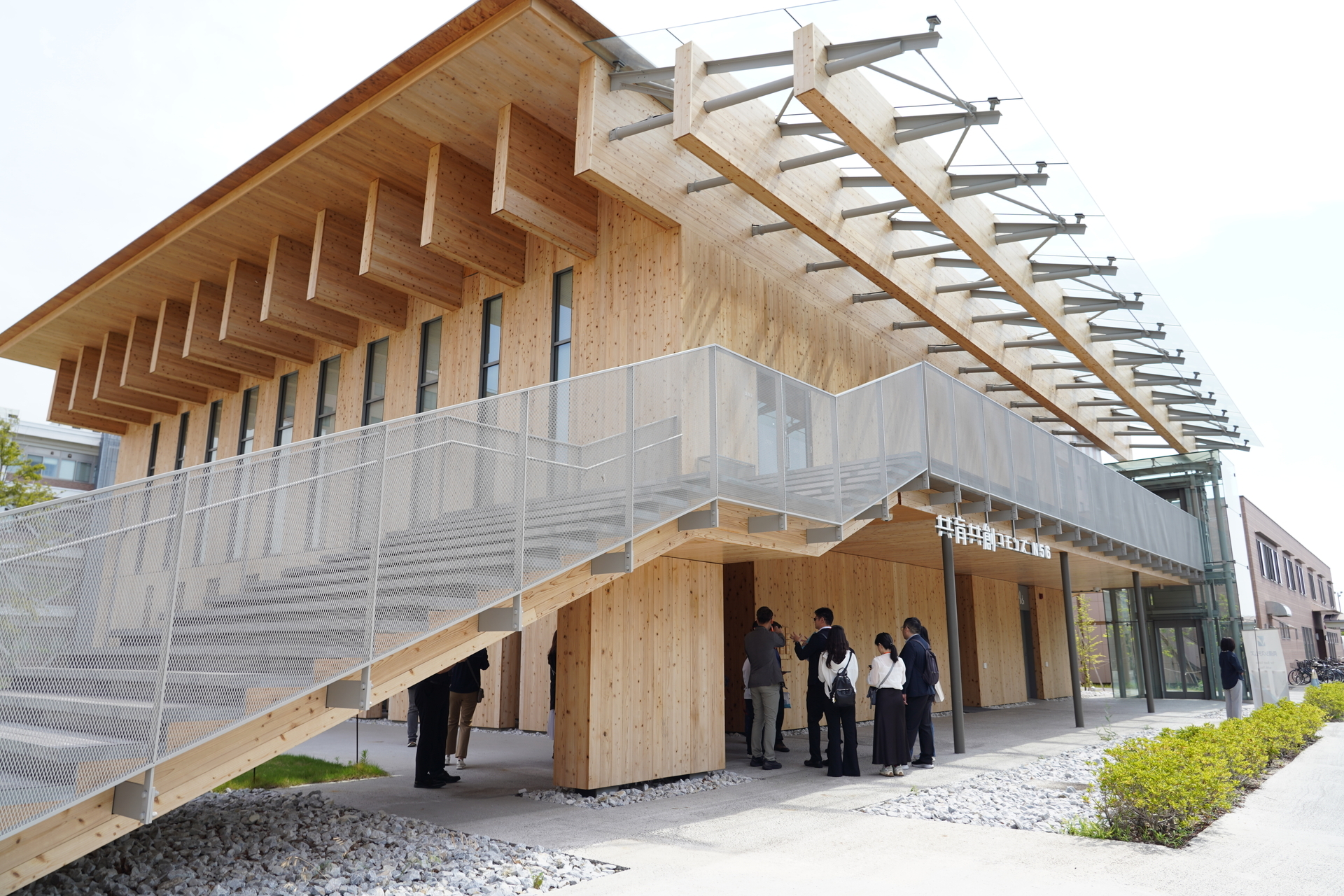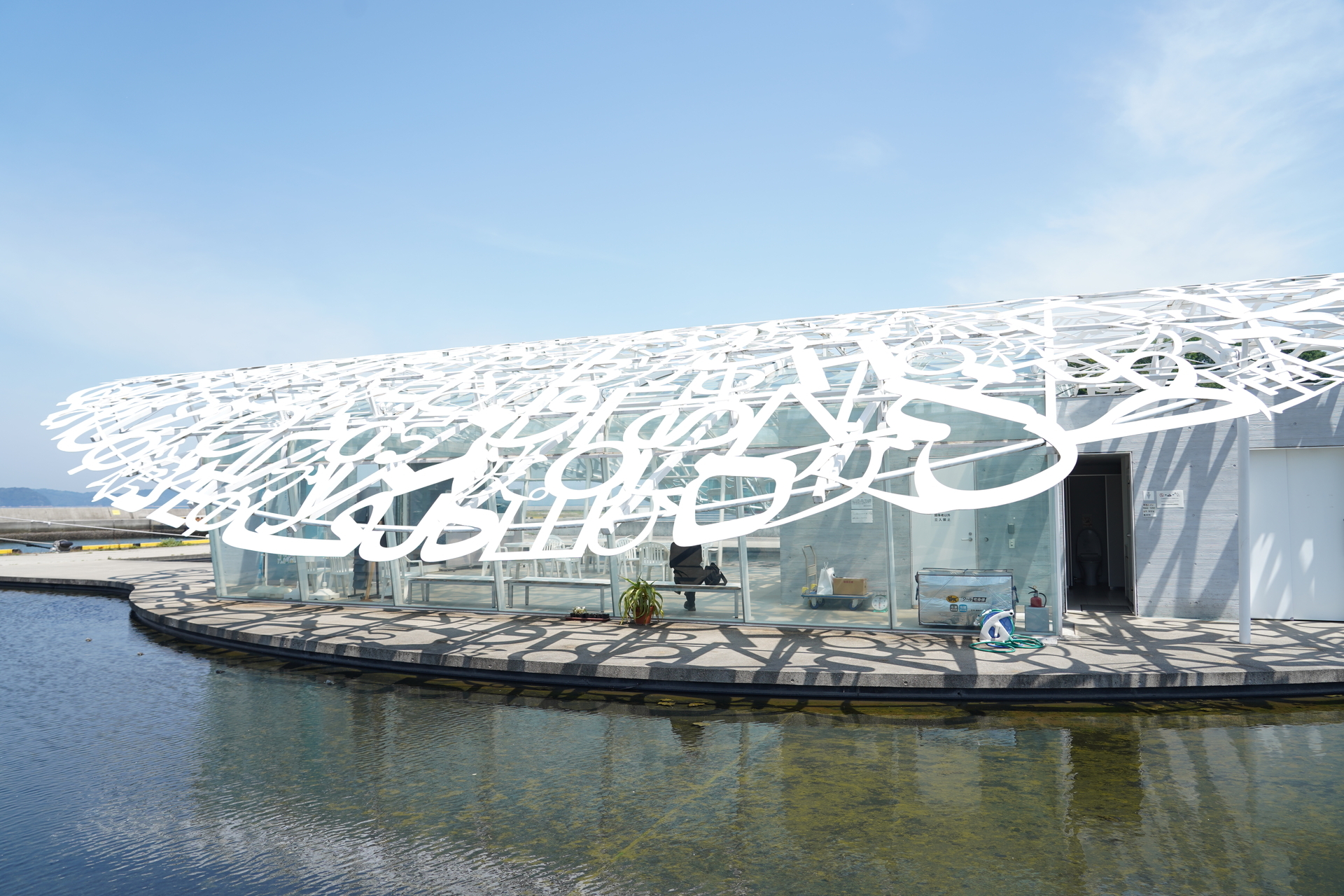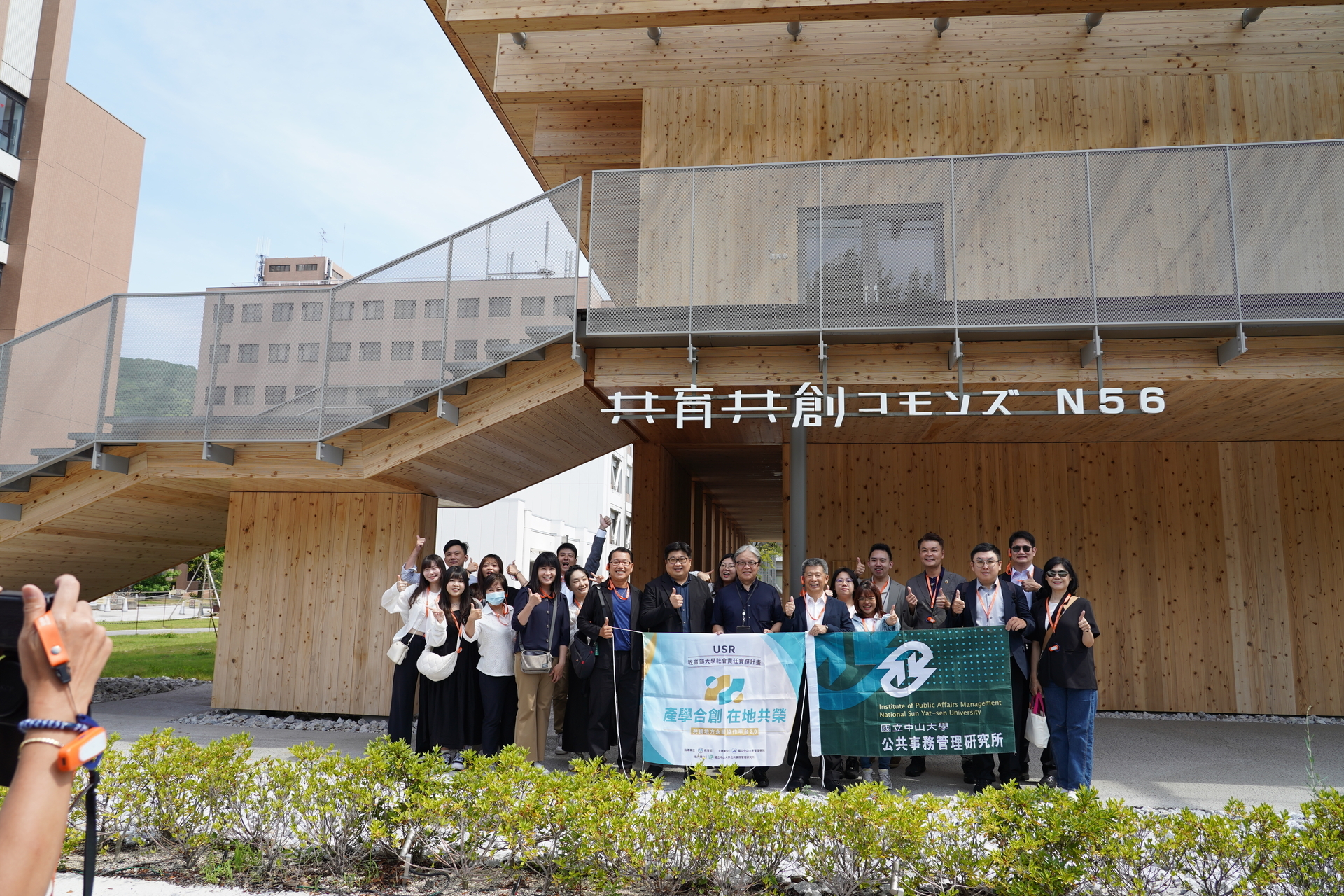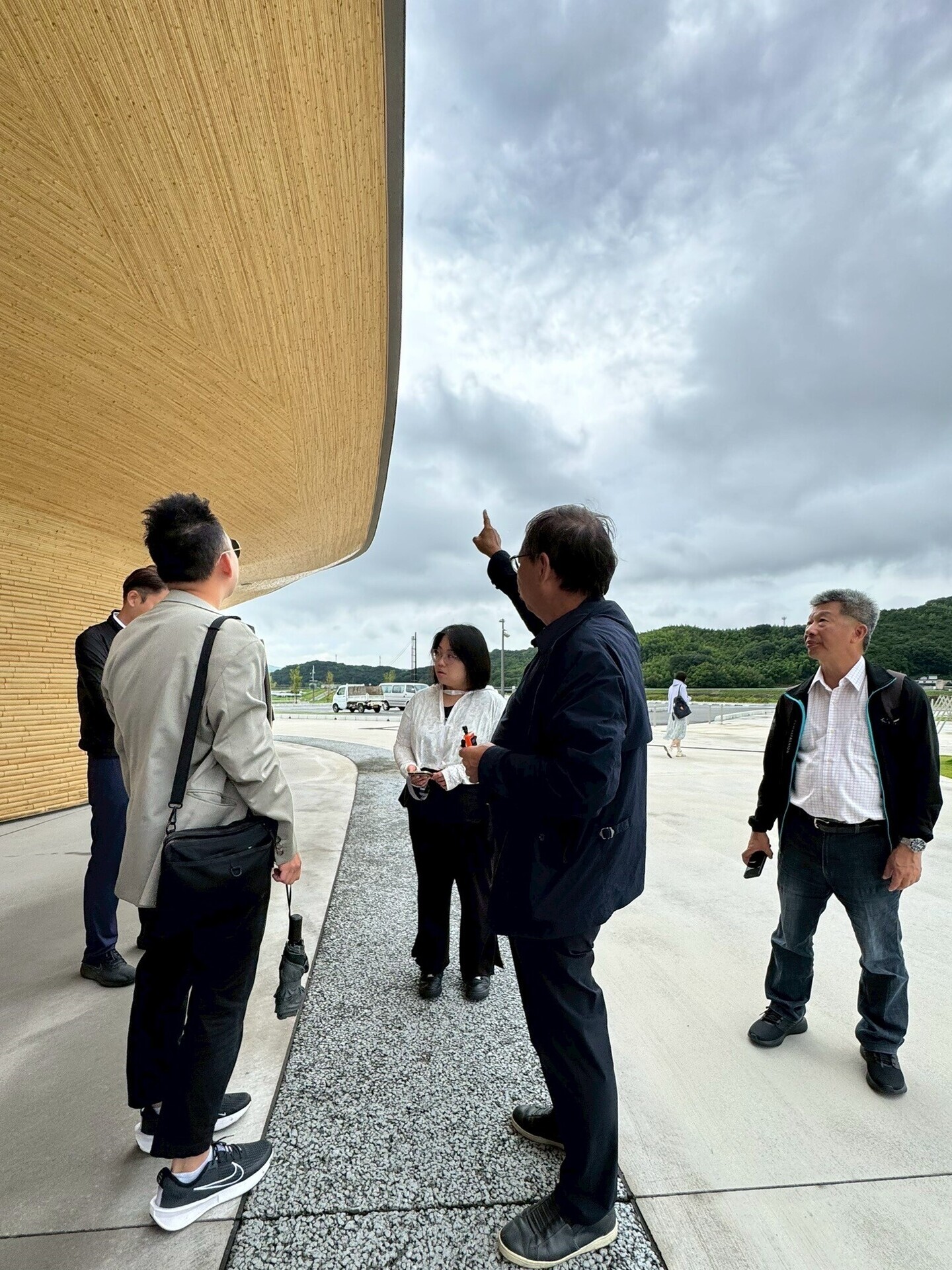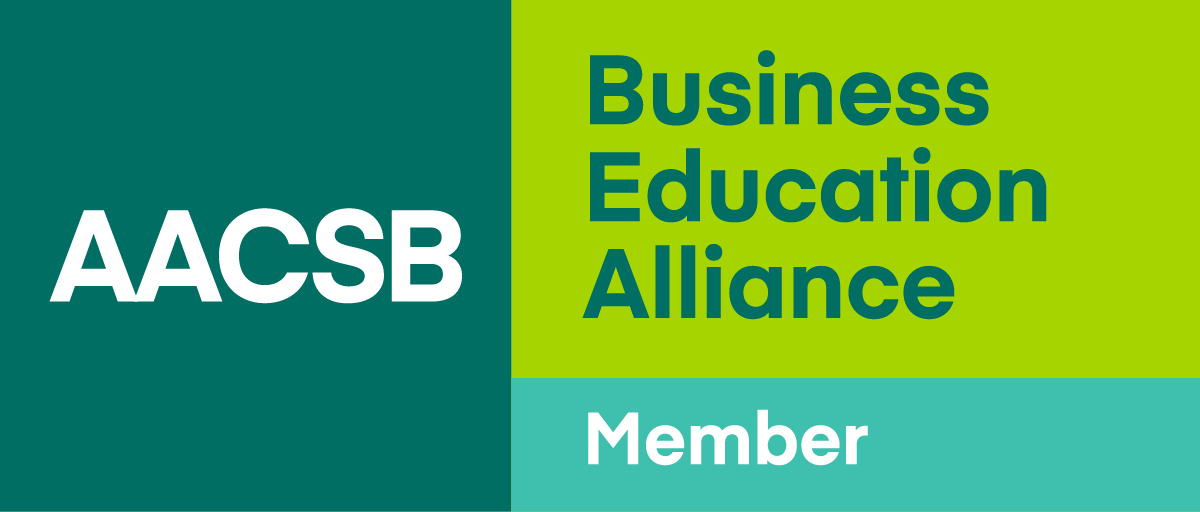[CM USR] Following in the Footsteps of Andō Tadao and Yayoi Kusama: NSYSU Faculty and Students Explore Sustainability and Regional Revitalization in Okayama, Japan
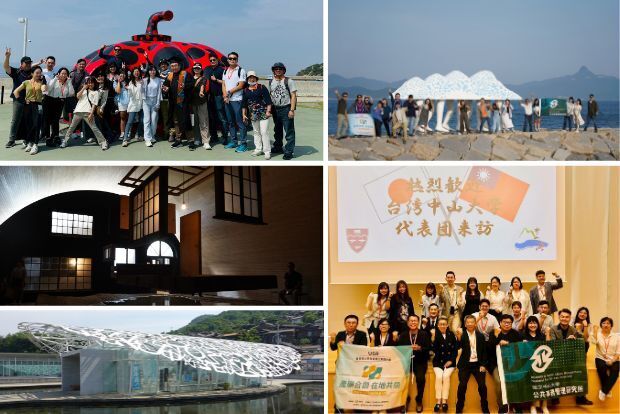
To address pressing challenges such as population aging, industrial decline, and regional disparity, National Sun Yat-sen University (NSYSU) continues to emphasize experiential learning through international engagement. As part of the Office of Academic Affairs’ Corporate Sustainability and Regional Revitalization Co-learning Initiative, Professor Jui-Kun Kuo and Assistant Professor Cheng-Hsun Hsieh from the Institute of Public Affairs Management led a group of 18 interdisciplinary students and faculty members to Okayama, Japan, for a study tour exploring how universities, shrines, and communities—particularly those featured in the Setouchi Triennale—collaborate to promote sustainable regional development through local assets, art, and cultural integration.
Learning from Academia and Community Innovation
The delegation visited Okayama University and The University of Environment and Health (IPU) to examine how higher education institutions implement sustainability policies and form strategic alliances for regional engagement. They also explored Okayama Shrine and surrounding communities to see how cultural institutions have transformed into platforms for public participation through diverse events.
During their three-day field study, students traveled across five islands in the Seto Inland Sea during the off-season of the Setouchi Triennale, immersing themselves in the daily rhythms of local island life while observing how private enterprises leverage modern art to rejuvenate communities—through new galleries, adaptive reuse of old structures, and innovative public-private partnerships.
At Okayama University, Dr. Masanobu Abe (阿部匡伸), Executive Vice President for Green and Digital Transformation, shared the university’s leadership in establishing Japan’s Carbon Neutral University Alliance, which includes 36 national, 11 public, and 25 private universities. The alliance fosters cooperation in fields such as technology innovation, talent development, ecological engineering, and local industry transformation. Internally, Okayama University has made the SDGs and carbon neutrality its core mission, influencing faculty research to align with broader institutional goals beyond individual academic interests.

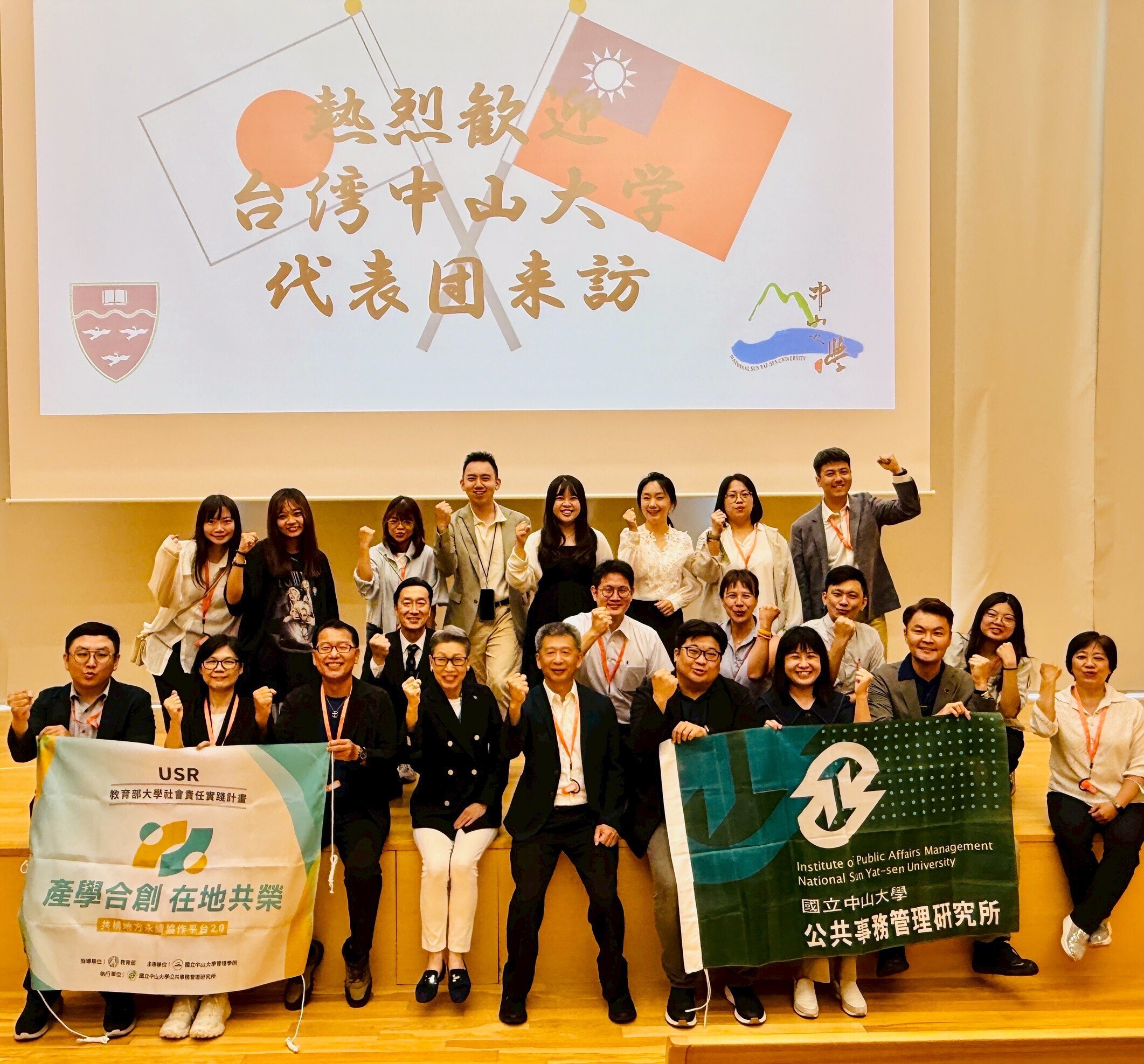
▲ Left: NSYSU faculty and students with Prof. Masanobu Abe, Executive Vice President of Okayama University (front row, fourth from right), after the exchange on regional revitalization and carbon management.
▲ Right: Group photo after an academic exchange at IPU; President Setsuko Ohashi (front row, fourth from left) shared the university’s strong focus on experiential learning and career development.
In the exchange sessions, faculty and students discussed how universities should not only embed community engagement into curricula via Service-Learning, but also actively contribute to policy innovation and local governance. Okayama University’s involvement in regional carbon neutrality strategy, industrial consultation, and regulatory development for CLT (Cross Laminated Timber) construction—such as supplying timber for the 2025 Osaka Expo's “Grand Roof”—highlights how academia can shape sustainable infrastructure at scale.
Setouchi Triennale: Art-Driven Regional Governance
In contrast to universities acting as knowledge pioneers, NSYSU’s fieldwork on the Setouchi islands showcased Japan’s private-sector-led regional revitalization model, where corporate funding has transformed depopulated rural areas into globally recognized destinations through contemporary art. Professor Kuo encouraged students to analyze the DMO (Destination Marketing Organization) model, noting the importance of collaborative branding, resource integration, and institutional coordination in achieving long-term sustainability for events like the Setouchi Triennale.
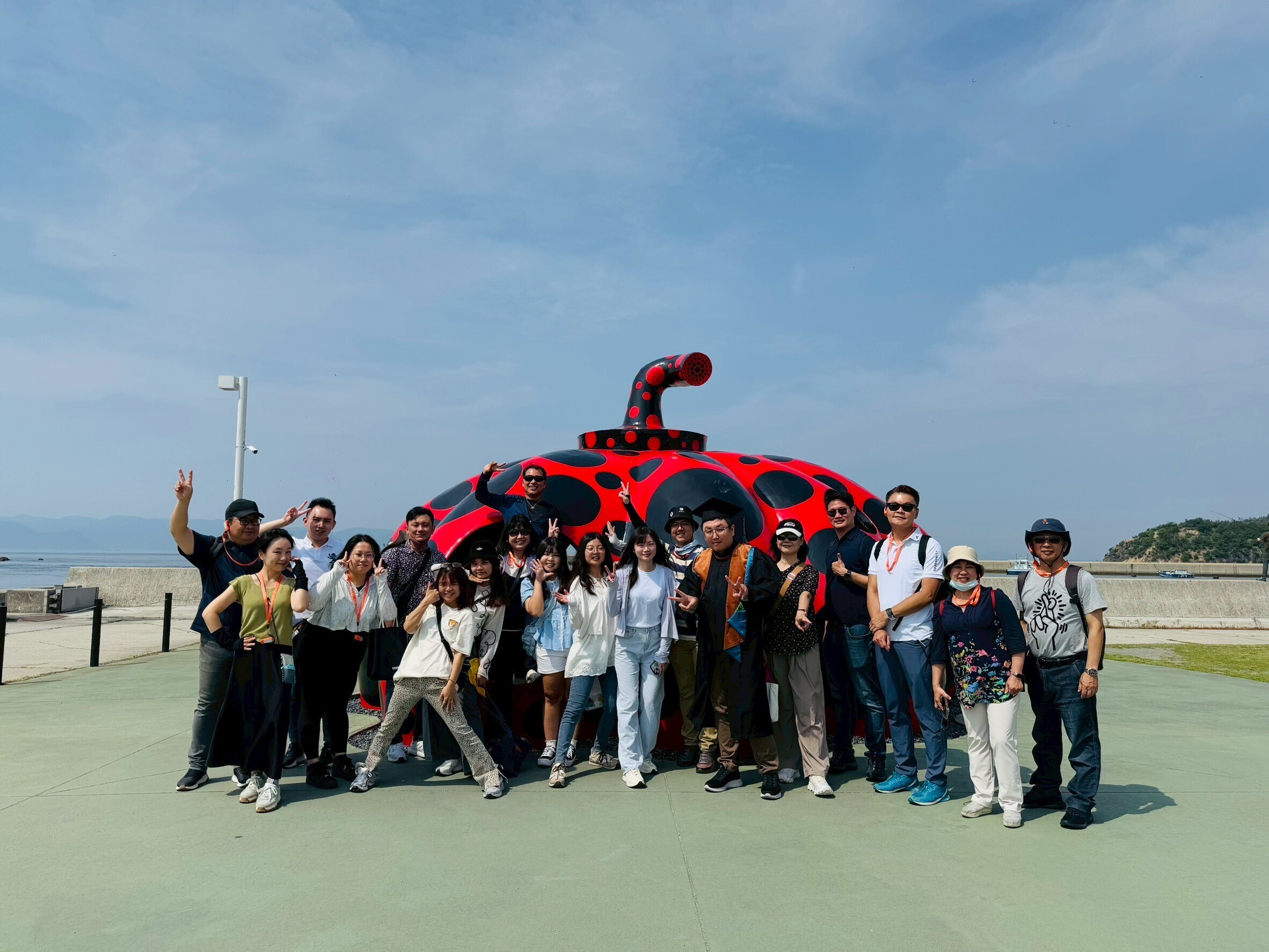

▲ Left: Group photo with Red Pumpkin by Yayoi Kusama.
▲ Right: Group photo in front of Walking Ark, a popular artwork on Ogijima.
One notable project is the Naoshima Hall and Art Museum, opened in 2025 under the direction of Soichiro Fukutake, founder of Benesse Corporation (known for "Shimajiro" educational products). Partnering with world-renowned architect Tadao Andō, Fukutake applied a cultural strategy that transforms "global recognition" into "local capital," using art as a catalyst for both economic regeneration and civic engagement. Through photography exhibitions and hands-on workshops, local residents became co-creators—demonstrating how art can drive community-based innovation and mutual prosperity.
Another transformative example is the Inujima Seirensho Art Museum, converted from a defunct copper refinery by artist Yukinori Yanagi and architect Hiroshi Sambuichi. The museum retains the site's industrial integrity while minimizing environmental impact through passive ventilation and solar energy—seamlessly blending landscape art with green design. For Mei-Ping Huang, a master’s student in Public Affairs, the visit revealed that “art is no longer just about beauty or decoration; it has become a medium for spatial governance and local storytelling.”

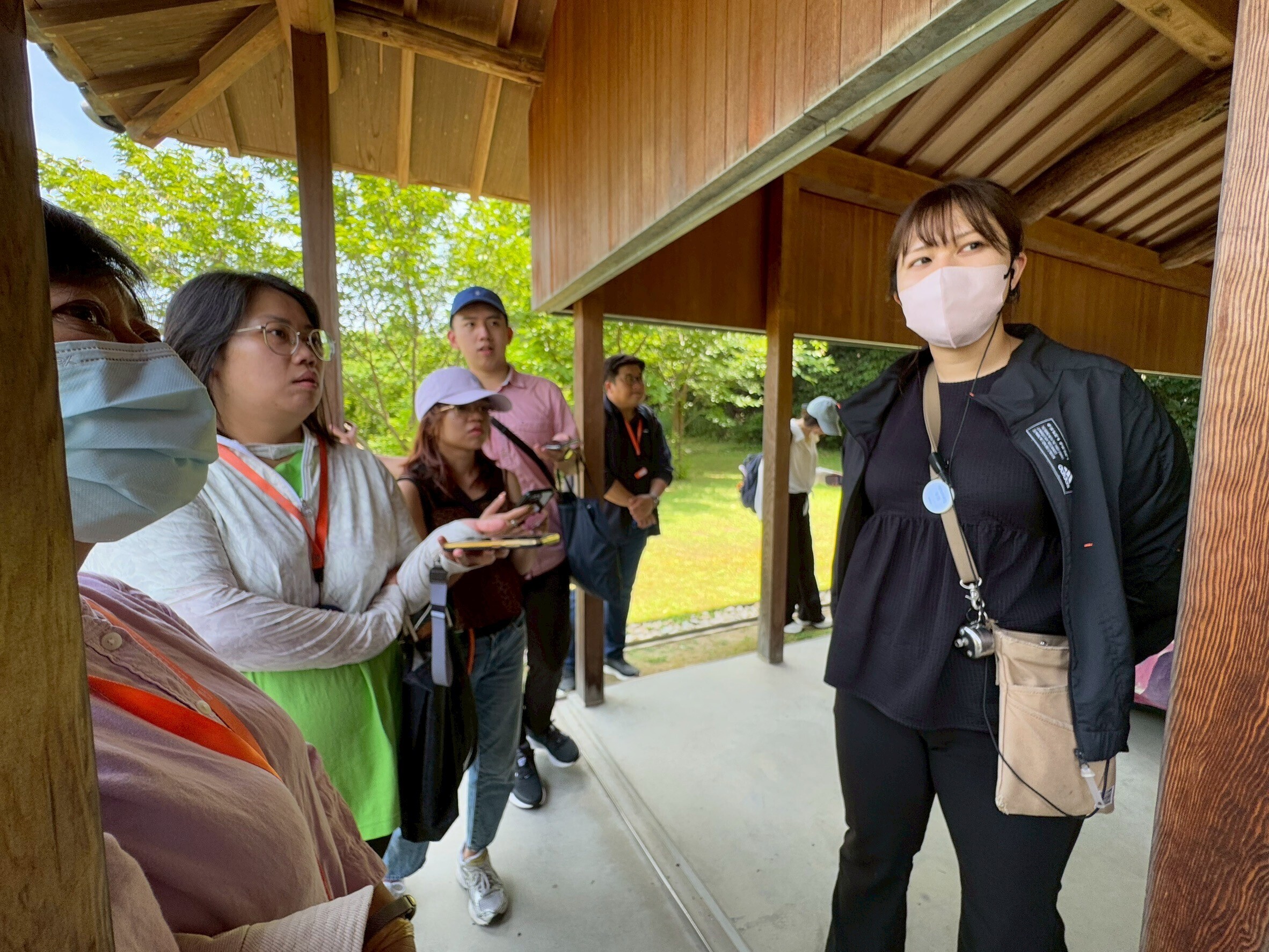
▲ Left: Interior of Inujima Seirensho Art Museum, featuring a site-specific installation by Yukinori Yanagi inspired by Yukio Mishima.
▲ Right: Faculty and students speak with a local staff member (far right), learning that residents welcome the environmental beautification efforts brought in by the art festival’s corporate sponsors.
Integrating Tradition and Modernity for Community Building
Common across these initiatives is the drive for inclusive regional co-creation. Shintarō Hisayama, chief priest of Okayama Shrine, emphasized that shrines should evolve beyond religious symbolism to serve as community anchors—by transforming traditional festivals into youth-oriented events like open-air markets and music gatherings to revitalize the local spirit.
Assistant Professor Cheng-Hsun Hsieh encouraged students to reflect on the differences between Taiwan’s institutional context and Japan’s adaptive strategies, emphasizing the potential for integrating these cases into classroom teaching and policy discourse. Wei-Chung Chen, a graduate student from the Institute of Communications Management, shared: “As a working professional, I rarely get to join international academic trips. This journey was eye-opening—it connected theory with real-world cases and greatly expanded my perspective.”
The student group included master's and doctoral students from Public Affairs, Communications Management, and Marine Engineering, as well as mid-career professionals from consulting firms, community organizations, hospitals, and private enterprises. Yueh-O Wang, a Public Affairs Ph.D. student and Executive Director of the Active Aging Promotion Association, noted that the program's interdisciplinary approach provided valuable insights for future community planning efforts in Taiwan.
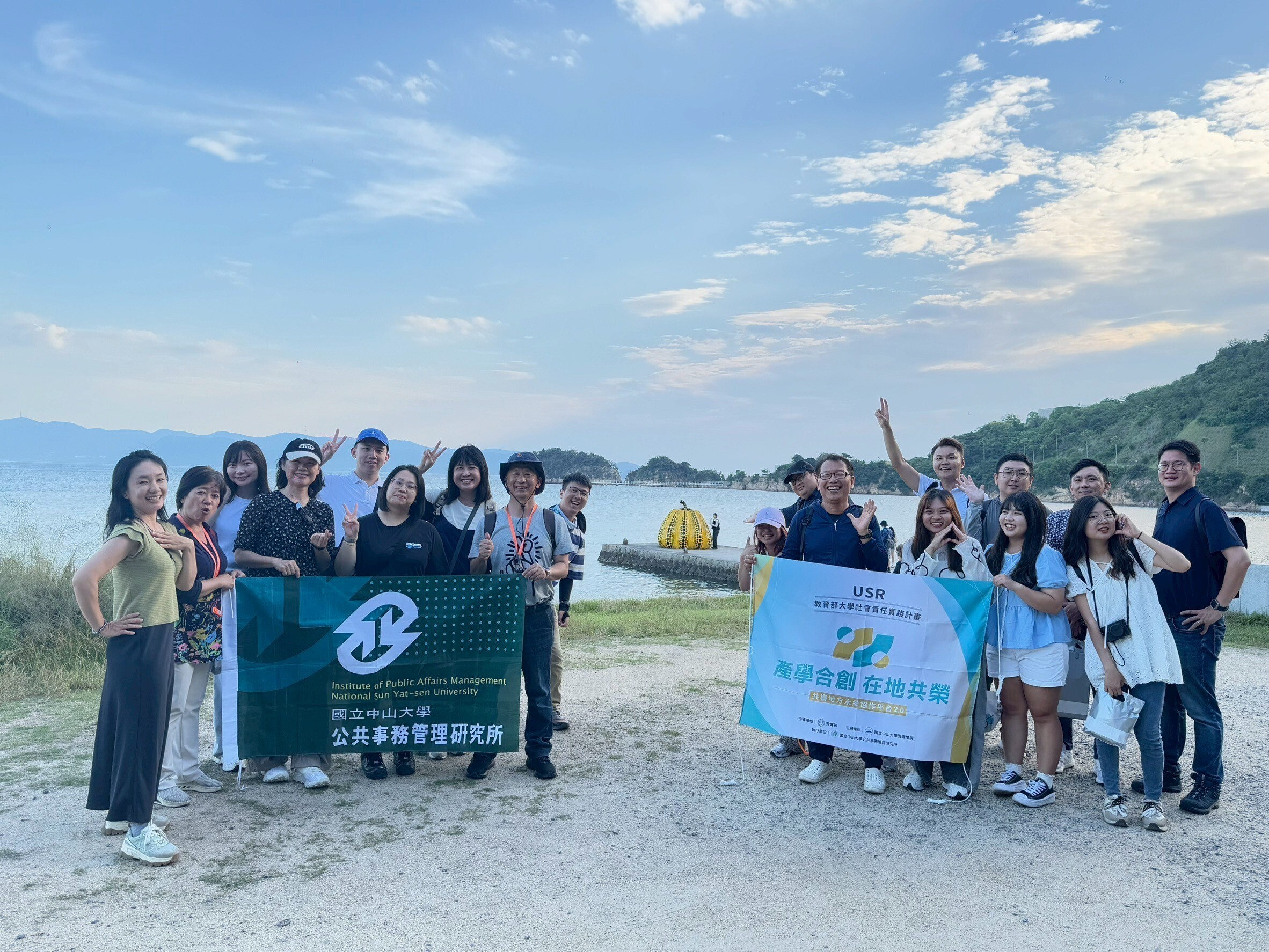
▲ Group photo with Yellow Pumpkin by Yayoi Kusama. The sponsoring Benesse Corporation also funds the Well-being Lab in collaboration with Naoshima Town Art Festival Committee and interdisciplinary scholars from Okayama University’s Center for Co-creation of Social Innovations.
Strengthening Taiwan-Japan Collaboration in Regional Sustainability
Since 2020, Professor Jui-Kun Kuo, also the Project Lead of NSYSU’s USR initiative, has collaborated with partners in Kaohsiung's Gangshan District to launch the “Box of Memories” cultural workshop series—mapping local heritage and building intergenerational emotional connections. From 2023 to 2024, course-based study tours and exchanges with Okayama University and Okayama Shrine helped lay the groundwork for deeper bilateral cooperation.
This 2025 visit to Japan further enriched NSYSU’s understanding of university engagement and regional revitalization practices. It also signaled a promising future for continued collaboration between Okayama, Japan and Kaohsiung, Taiwan—through shared knowledge, cultural exchange, and sustainable development.
📎 Related News from Okayama University:
— Submitted by the USR Project Team / Edited by the College of Management Media Team
![[CM USR] Following in the Footsteps of Andō Tadao and Yayoi Kusama: NSYSU Faculty and Students Explore Sustainability and Regional Revitalization in Okayama, JapanImage](/static/file/24/1024/pictures/313/m/mcen1920x1920_large210762_910908715470.jpg)
